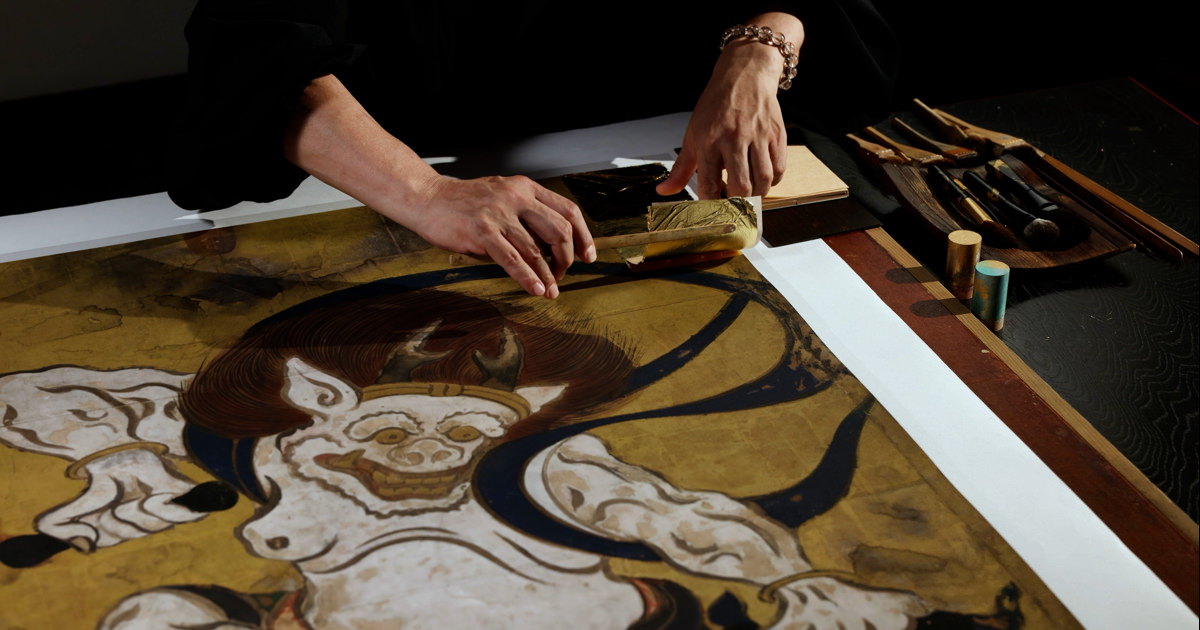Chinese Lions
High-resolution facsimiles
- Material
- printed, gold on washi paper
- Period of creation
- The Joint-research Project with CPCP 2023
- Housed
- Museum of the Imperial Collections, Sannomaru Shozokan
Original
- Cultural property designation
- right screen: National Treasure
left screen: National treasure(Accompanying Object) - Artist
- Kano Eitoku (right screen)
Kano Tsunenobu (left screen) - Historical era
- right screen:Momoyama(16th century)
left screen:Edo(17th century) - Material
- Ink, color, and gold on washi paper
- Medium
- Pair of six-fold screens
- Size
- right screen: H223.6 × W451.8 cm
left screen: H224.0 × W453.5 cm - Housed
- Museum of the Imperial Collections, Sannomaru Shozokan
Description
The right screen is famous as the confirmatory work of Kano Eitoku(1543-90), a master of the Momoyama art world, indentified by its colophon by Kano Tan'yu. There is no doubt that this is by Eitoku because of the impressive and valiant depiction of imposing tigers striding among rocks with strong brushwork in spite of simple composition. The left screen was painted to match the right by Kano Tsunenobu(1636-1713) afterward, and the two were passed down to the present as a pair.
— Cited from website of Museum of the Imperial Collections, Sannomaru Shozokan
*Japanese subtitles only
*In order to view videos, it is necessary to consent to the use of cookies by our website.
If the videos are not displayed, please click the “Cookie Settings” and accept cookies.




